Average sizes and life expectancy for this breed:
Beneath the English Cocker Spaniel’s physical beauty, is a devoted, boundless, eager-to-please personality. This dog breed is well-known for its ability to flush out and retrieve gamebirds with ease. Today, English Cocker Spaniels are endearing canine companions that have become increasingly popular thanks to their charming and happy dispositions.
The English Cocker Spaniel is a medium-sized canine with long ears and a very agreeable temperament. The word “Cocker” refers to the olden days when they were used for hunting woodcock in England. However, they have also been used to track and chase many other types of birds over the years.
The English Cocker Spaniel is a cheerful and affectionate dog breed. They love to engage in a variety of activities with their human companions. This dog breed thrives on being around families who can give them all the love and attention they desire. They also get along well with kids and make good canine companions for people of all ages. However, they can become mischievous if left alone or bored.
English Cocker Spaniels are strong dogs with long and square muzzles, expressive eyes, long ears, and a customarily docked tail. English Cocker Spaniels have a medium-length coat that is silky to the touch. They typically weigh anywhere between 11.7 and 15.4 kg.
English Cocker Spaniels can thrive in a variety of home environments. However, you need to make sure that you can tend to their companionship, health, and exercise needs. A trip to the dog park, a game of fetch, or supervised backyard time will keep your English Cocker Spaniel happy. These dogs are natural runners with high energy levels so, regular walks or runs in the countryside will be much appreciated!
See available puppies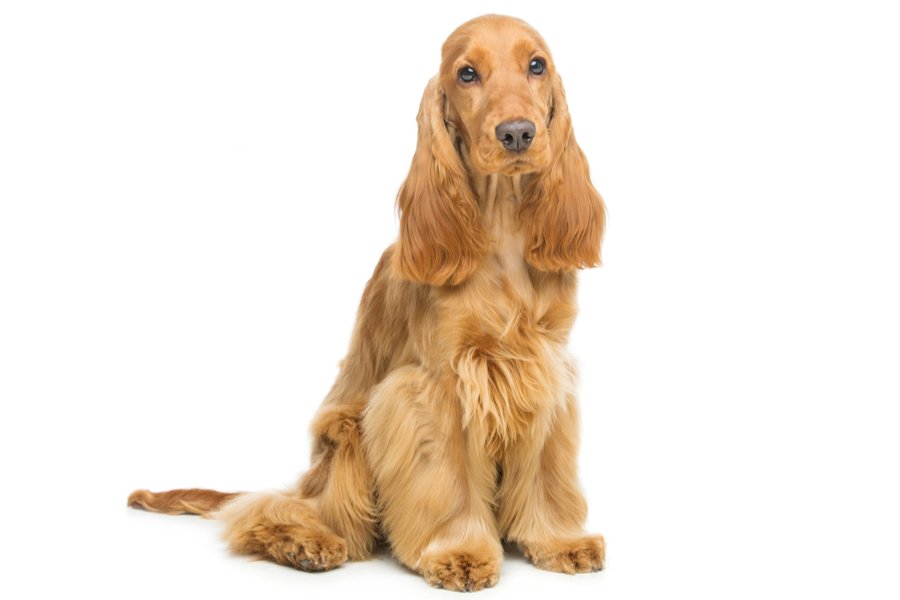

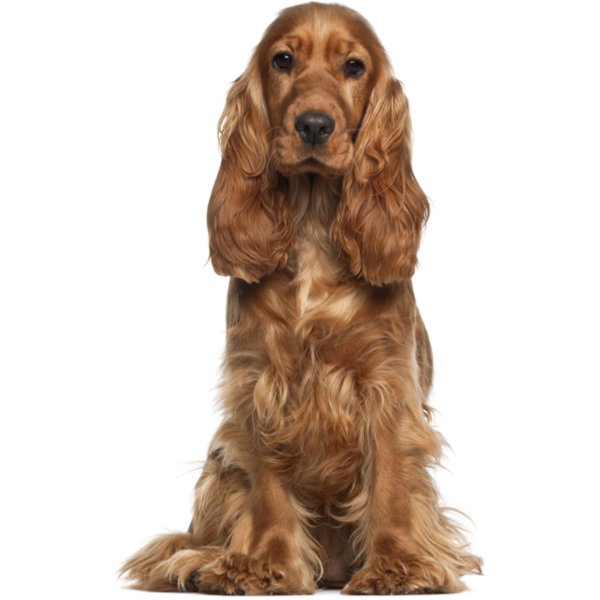


The Spaniel family of dogs is amongst the first group of dogs developed to help track and capture birds. It is a large dog group with many breeds built to hunt numerous bird species within various terrains. The exact origin of Spaniels is a little unclear, but we do know they have a long history. For example, they were mentioned in ‘The Book of the Chase’, written by Count Gaston de Foix in 1387. They are thought to have originated in Spain, however, most of the modern varieties were developed in England, including the Cocker Spaniel.
Cocker Spaniels were first recognised as a distinct breed in 1892. Before then, a single spaniel could produce three varieties; Cocker, Springer, and Sussex Spaniels. The only difference was their size. So, small puppies were instantly classed as Cocker Spaniels and the largest were classed as Springer Spaniels. The smaller Cocker Spaniel was famed for its ability to dive into thick undergrowth to retrieve game without much struggle. Their tails were also customarily docked by two-thirds to prevent the tail from getting caught in thick bushes whilst working.
When the English Cocker Spaniels arrived in America, many dog breeders in the United States favoured and bred for a distinct look from what was developed in England. The two styles divided until they were split into different varieties in 1936. This meant these varieties could be interbred but would be displayed separately. Because virtually nobody was selected to interbreed these varieties, they were divided into separate dog breeds in 1946. The UK Cocker Spaniel Club was founded in 1902.
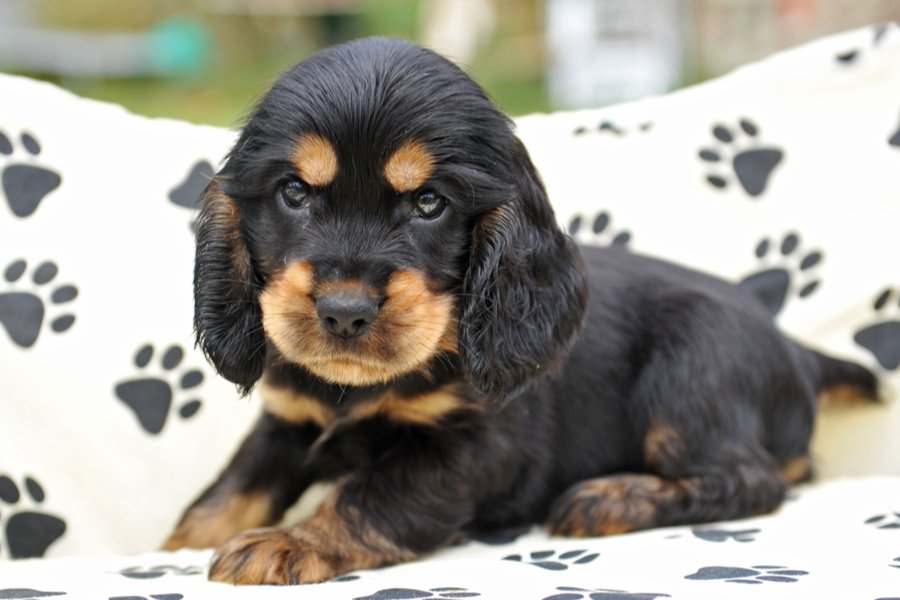
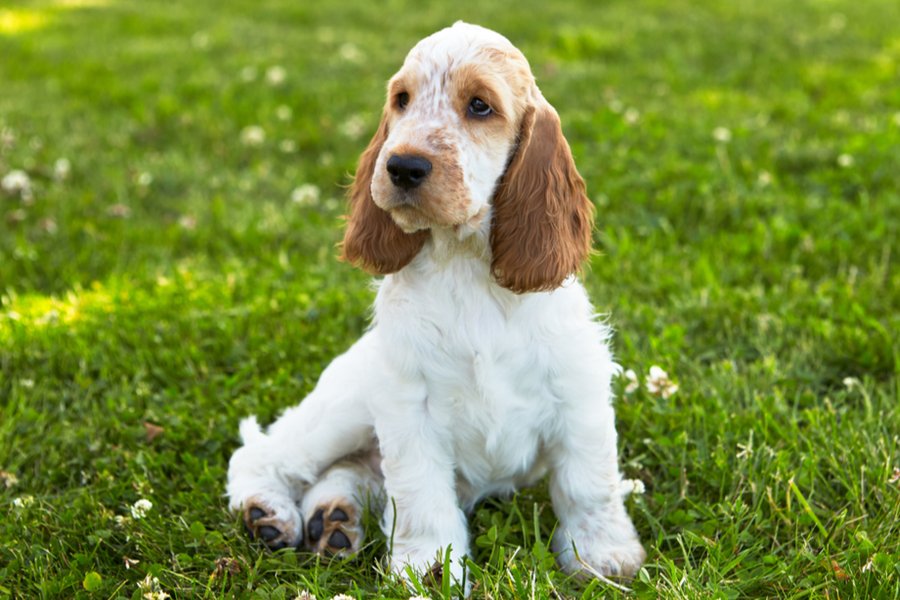
The English Cocker Spaniel is a little taller than it is long. This medium-built dog breed is small enough to walk through thick bushes but large enough to retrieve game.
These dogs have well-developed skulls that are fairly long and somewhat slender compared to other spaniel breeds. They have square muzzles and long ears that are set low and level with the eyes. They are also well coated with long, straight, silky hair. Overall, their expression is soft, and the contours of the head are smooth, with no abrupt angles.
English Cocker Spaniels have strong, compact bodies with deep chests, sloping shoulders, and well-muscled hindquarters. Their feet are cat-like in shape and thickly padded. The tail is set low on the back and can have been previously docked. It should move in a merry action level with the back, but never cocked upwards.
These dogs are coated in medium-length silky hair which lies flat against the body. The forelegs, hindlegs above the hocks, and body should be well-feathered.
English Cocker Spaniels come in a variety of coat colours and patterns. These are as follows:
Solid colours: Black, golden, liver/chocolate, red, liver and tan, black and tan. No white is allowed on the body apart from a small patch on the chest.
Bi-colours: Orange and white, black and white, lemon and white, black and tan.
Tri-colours: Liver, white and tan, and black, white, and tan
Roans: Orange roan, lemon roan, blue roan, liver roan, blue roan and tan, and liver roan and tan.
English Cocker Spaniels have kept their strong hunting instincts. So, they love to play games that involve retrieving, recall, and scent games. They adore being part of every family activity. English Cocker Spaniels are happy, loyal, obedient, sensitive, and playful. Thus, they are the perfect companion for a considerate child or an adventurous adult.
The English Cocker Spaniel is well-known for its cheerful, devoted, and calm disposition. They are also highly trainable as they live to please their owners. These dogs are moderate barkers so they will be quick to alert you when someone approaches the house.
English Cocker Spaniels develop strong bonds with their human companions. So, they do not like to be left alone for long periods. They are also prone to developing separation anxiety which can lead to stress barking and excessive chewing.
These sociable, busy dogs thrive on love and attention. All they want is to please their owners. English Cocker Spaniels are perfect for families with children and households with other animals and pets.
Like every dog, English Cocker Spaniels require early socialization. Expose them to various people, experiences, sounds, and sights while they are still young. Socialization helps guarantee that your English Cocker Spaniel puppy grows up to be a well-rounded and well-mannered dog.
It’s worth noting that these playful dogs need to be entertained with a variety of toys, games, and companionship, otherwise they can develop a mischievous streak. These dogs are also very curious by nature, especially when they are puppies. So, you might want to keep food and rubbish bins out of reach!
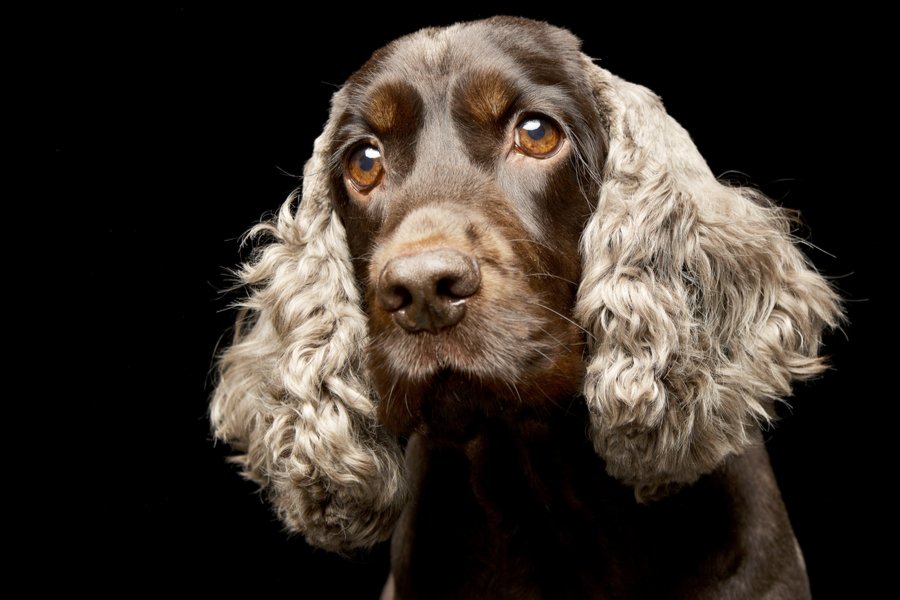
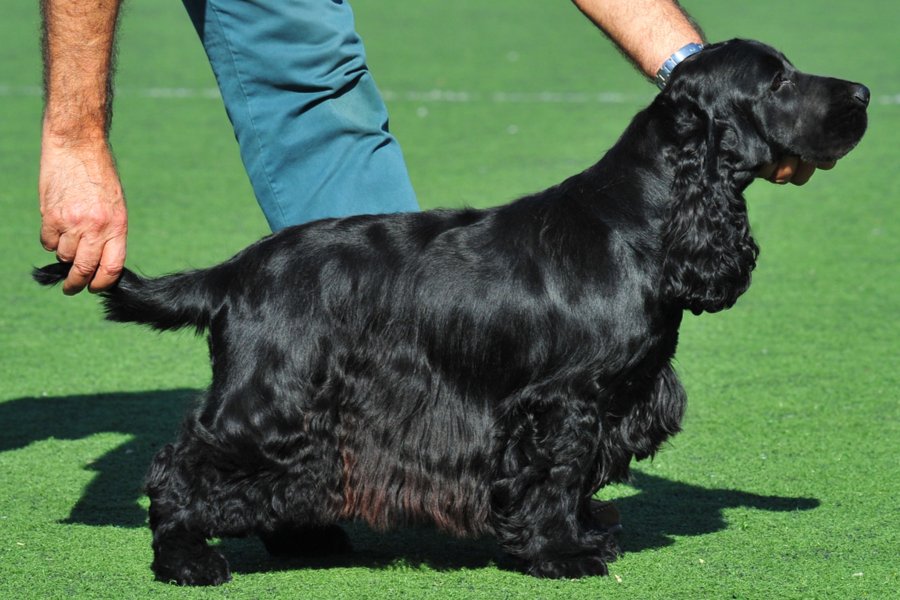
With a cheerful, loyal character and a high level of intelligence, English Cocker Spaniels are generally easy to train. However, they do not respond well to harsh or negative training methods so it's essential that you only use positive reinforcement. These dogs can be a little stubborn with training if they don’t see any value in what they are doing, so always make sure training sessions are fun and they utilise the strong hunting instincts of this breed.
Obedience training is a good idea for all dogs but it’s particularly important for hunting dogs, to ensure they don’t run off after an enticing scent. Cocker Spaniels are fast learners that also generally do well in other dog sports such as agility, tracking, and flyball. Remember that mental stimulation is just as important as physical exercise for English Cocker Spaniels.
These dogs can sometimes be difficult to house train, but each individual is different. Exercise patience and understanding until your puppy gets the hang of it.
These affectionate dogs are keen to please and enjoy being close to their families. But always bear in mind that English Cocker Spaniels are hunting dogs, so be cautious when outside as they may start chasing small animals or birds. Leash training is essential for this breed.
English Cocker Spaniels are relatively high maintenance when it comes to grooming. You will need to brush through their long coat at least 2-3 times a week with a steel comb and then a decent slicker brush. However, if they are running around fields or playing in the mud often then you will need to bathe and brush more regularly because their coat is prone to matting. If you intend to show your dog, you might want to work with a breeder to learn more about grooming the coat correctly. In addition to regular grooming at home, it’s a good idea to take your dog to a professional groomer once every few months for a trim.
Clean their ears weekly with an ear cleaner recommended by a breeder or vet. This is important because the long, low-hanging ears of English Cocker Spaniels are prone to developing infections. Regularly check for signs of infections, such as redness, itchiness, bad smell, and tenderness. If your English Cocker Spaniel frequently shakes their head or scratches at their ears, take them to the vet for an ear checkup. Upon diagnosis, it is best to start treatment as soon as possible because ear infections can become more difficult to treat if left to develop further.
Brush their teeth at least 2-3 times a week to eliminate tartar buildup and bacteria. Daily brushing is best to keep your English Cocker Spaniel’s mouth healthy.
Trim their nails once or twice a month or as needed. One sign that they need nail trimming is if you can hear them clicking on the floor. If you are unsure of how to trim a dog's nails, seek advice from your vet.
As you groom your English Cocker Spaniel, check for rashes, sores, or any signs of infection such as tenderness, redness, or inflammation on the skin, nose, ears, eyes, mouth, and on their feet. Their eyes should be clear, with no discharge or redness. Regularly checking your dog will help you to keep track of their health and identify any issues early on.
English Cocker Spaniels love to eat. So, your dog can quickly pile on the pounds if you are not careful. Make sure their diet has the right balance of all the main nutrient groups and provide a constant supply of fresh, clean water. Remember to feed them at least twice daily and to follow the feeding guidelines detailed on the food packaging. You should also schedule regular check-ups with your vet.
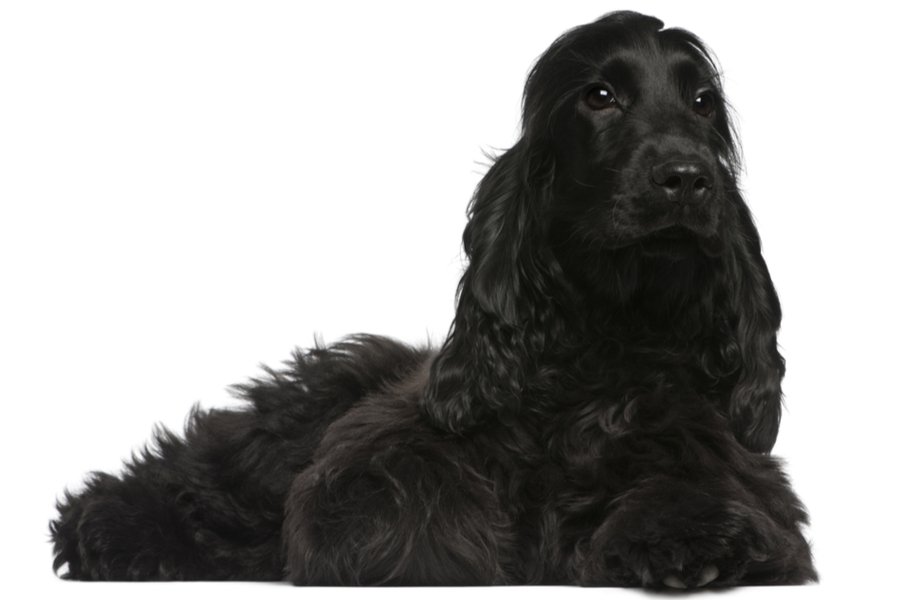
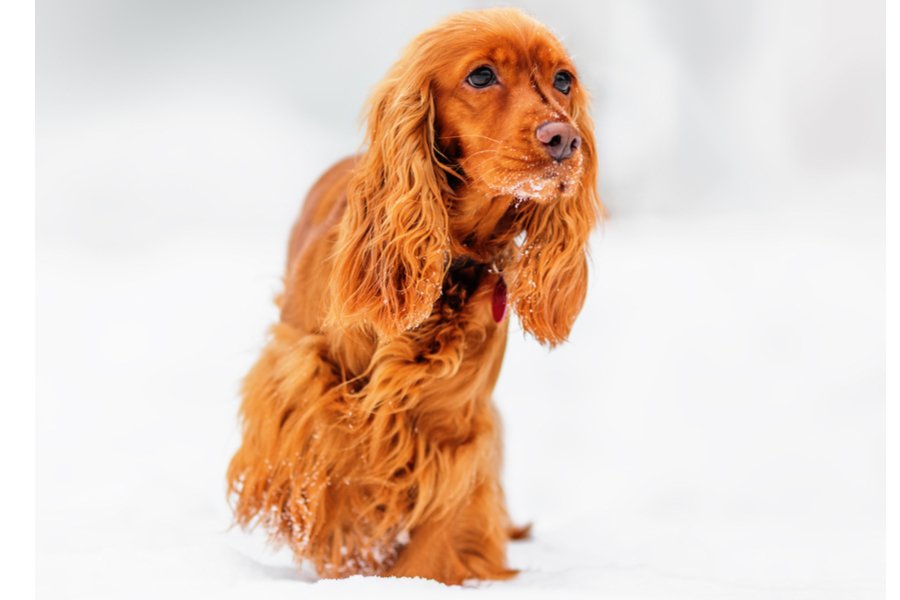
English Cocker Spaniels are generally considered to be a healthy breed. However, they are prone to developing specific health conditions. For peace of mind, always purchase a new puppy from a licensed and trustworthy breeder. They will be able to perform DNA tests to check if any underlying health issues are present.
While not all English Cocker Spaniels will get any or all of these diseases, it's essential to know them if you are planning to bring home this breed:
English Cocker Spaniels are approachable, fun-loving, calm, and gentle family dogs who do great with children, especially if they are familiarized with them from puppyhood. Adult English Cocker Spaniels who are not acquainted with children may do best with older children who are gentler with handling and interaction.
English Cocker Spaniels generally love the company of other dogs. They also get along well with cats, especially if they are introduced early on. However, bear in mind that this is a hunting breed so they should never be left alone with smaller pets.
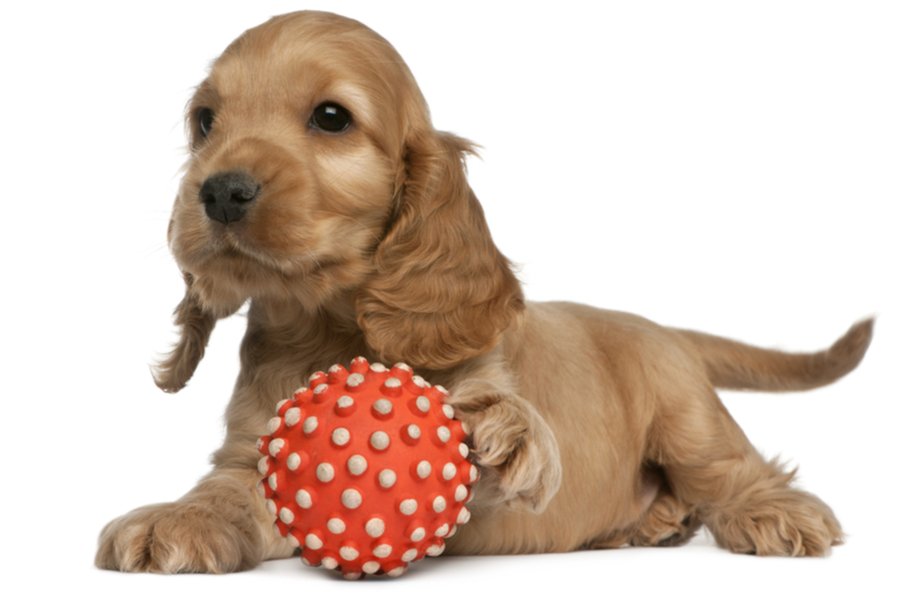

We can connect you with Breeders that are specialized in this particular breed.
See available puppies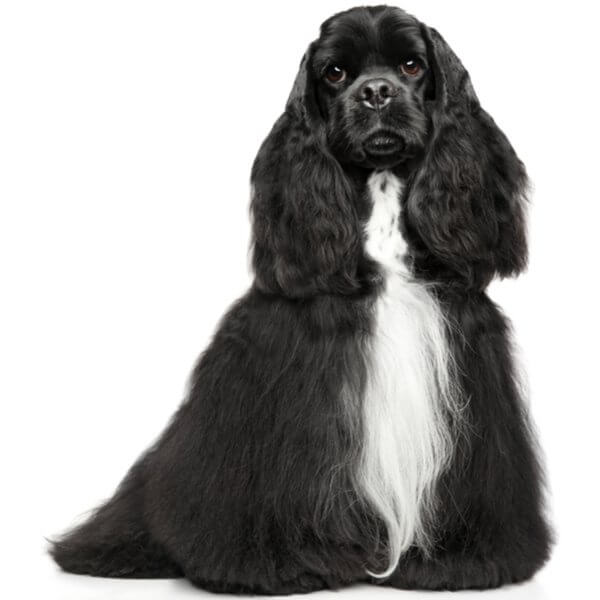
United States of America
Size : Medium
Coat : Long
Registration : KC, FCI, AKC
Exercise : 1 hour
Training : Easy
Grooming : Everyday
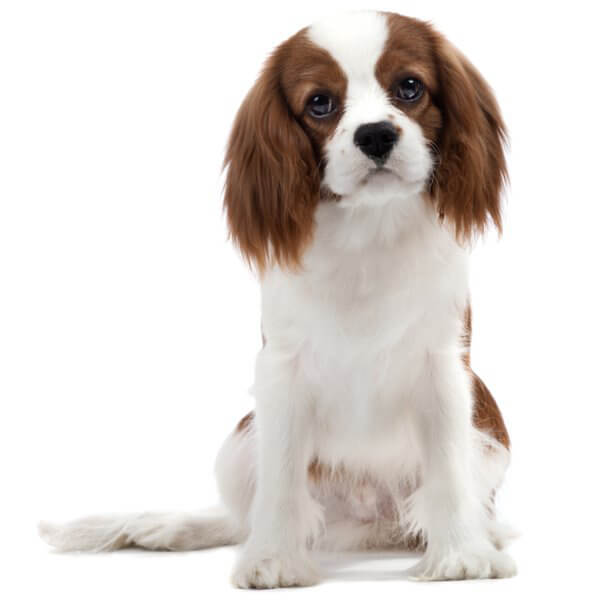
United Kingdom
Size : Small
Coat : Long
Registration : KC, FCI, AKC
Exercise : 1 hour
Training : Easy
Grooming : Twice a Week
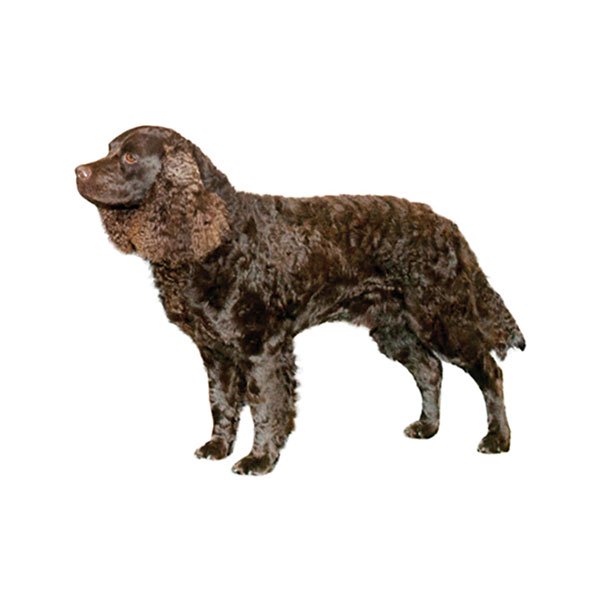
United States of America
Size : Medium
Coat : Short
Registration : KC, FCI, AKC
Exercise : 1 hour
Training : Easy
Grooming : Once a Week
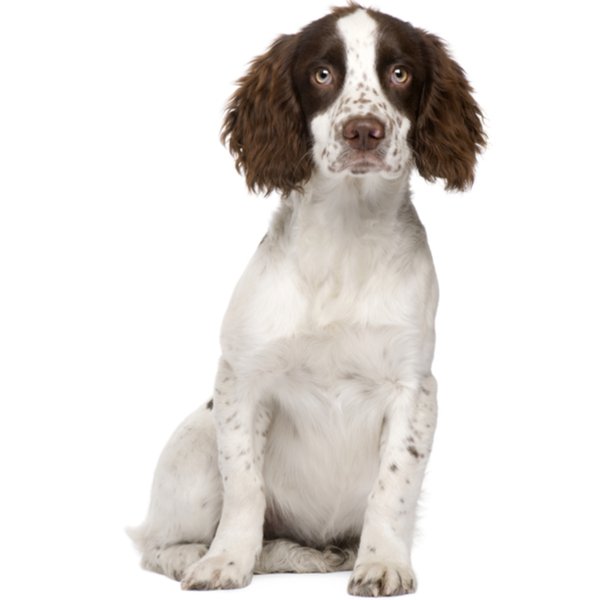
United Kingdom
Size : Medium
Coat : Long
Registration : KC, AKC, FCI
Exercise : 1 hour
Training : Easy
Grooming : Twice a Week


Need some advice?
Whether you're a first time pet owner, an experienced pet owner, a new or long-time breeder, or just curious about pets, we've got you covered!

January 17, 2024
What Is The Personality Of Russian Blue Cats?
Russian Blue cats are most known for their distinctive shimmery blue-silver coat and piercing green eyes. However, this breed’s calm and gentle temperament is what makes them shine the most in the feline world.

January 17, 2024
10 Facts About Russian Blue Cat Breed
Russian Blues are one of the most aesthetically stunning cat breeds, with a gorgeous plush silvery coat and vibrant green eyes. However, it’s not only their appearance that is beautiful; their nature is too.

January 17, 2024
How To Choose The Right Cat Breed for You
Cats can make the most fantastic animal companions; they are adorable, friendly, and loving. However, not all felines are created equal. There are many different breeds, of which each has its unique personality traits.
Need some help?
Contact us to speak to our friendly advisor, who will gladly help you find your dream pet!



We are registered in England and Wales under registration number 12568840,
and our registered office is at 58-60 Kensington Church Street, W8 4DB London, England.
© 2023 The Pedigree Paws